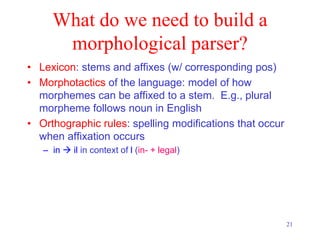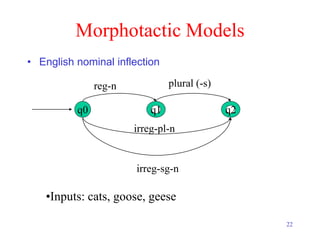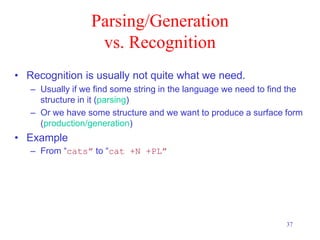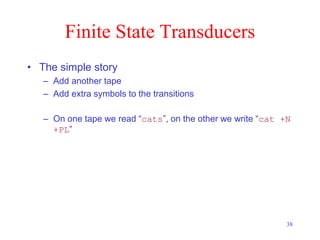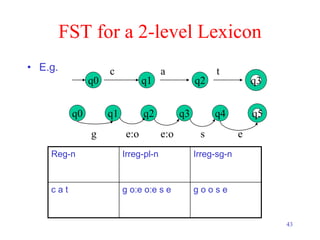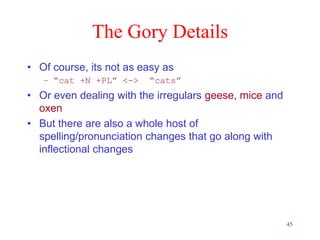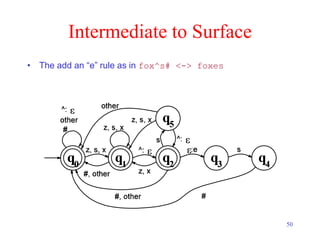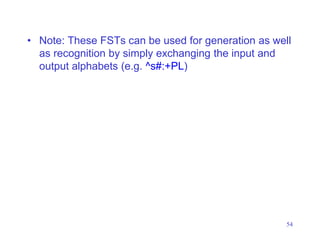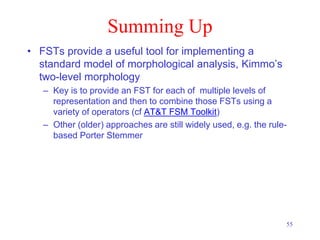This document discusses morphology and morphological parsing. It defines morphology as the study of how words are composed of morphemes, which are the smallest meaning-bearing units. There are two broad classes of morphology: inflectional morphology, which combines a stem and affix but results in a word of the same class, and derivational morphology, which typically results in a word of a different class. Morphological parsing involves breaking words down into their constituent morphemes. Finite state transducers can be used to represent morphological rules and perform parsing by mapping between a lexical level and surface form of words.
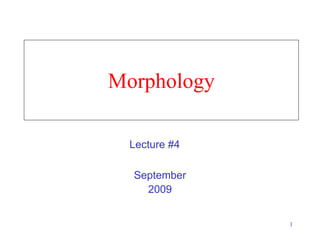

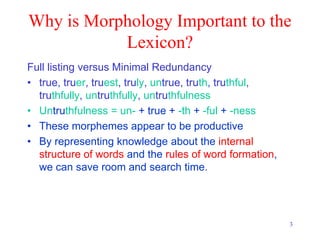

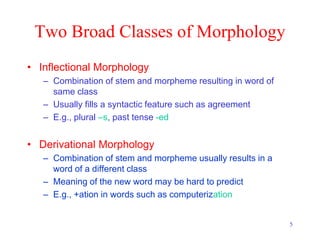





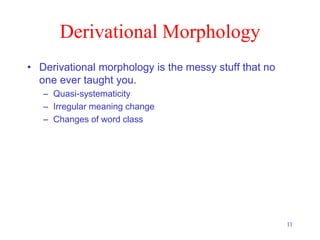


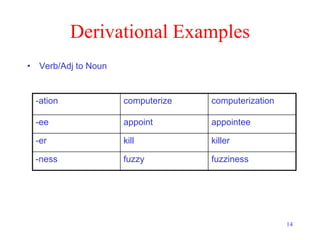
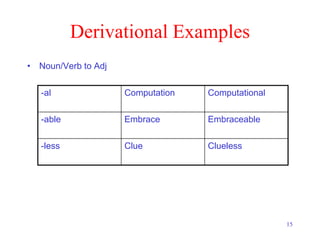

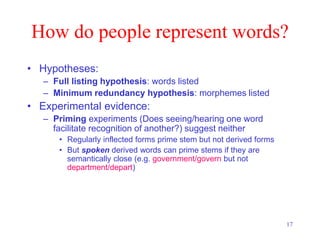

![19
Parsing
• Taking a surface input and identifying its components
and underlying structure
• Morphological parsing: parsing a word into stem and
affixes and identifying the parts and their
relationships
– Stem and features:
• goose goose +N +SG or goose +V
• geese goose +N +PL
• gooses goose +V +3SG
– Bracketing: indecipherable [in [[de [cipher]] able]]](https://image.slidesharecdn.com/lect4-morphology-231118083821-998b0d06/85/lect4-morphology-pptx-19-320.jpg)

